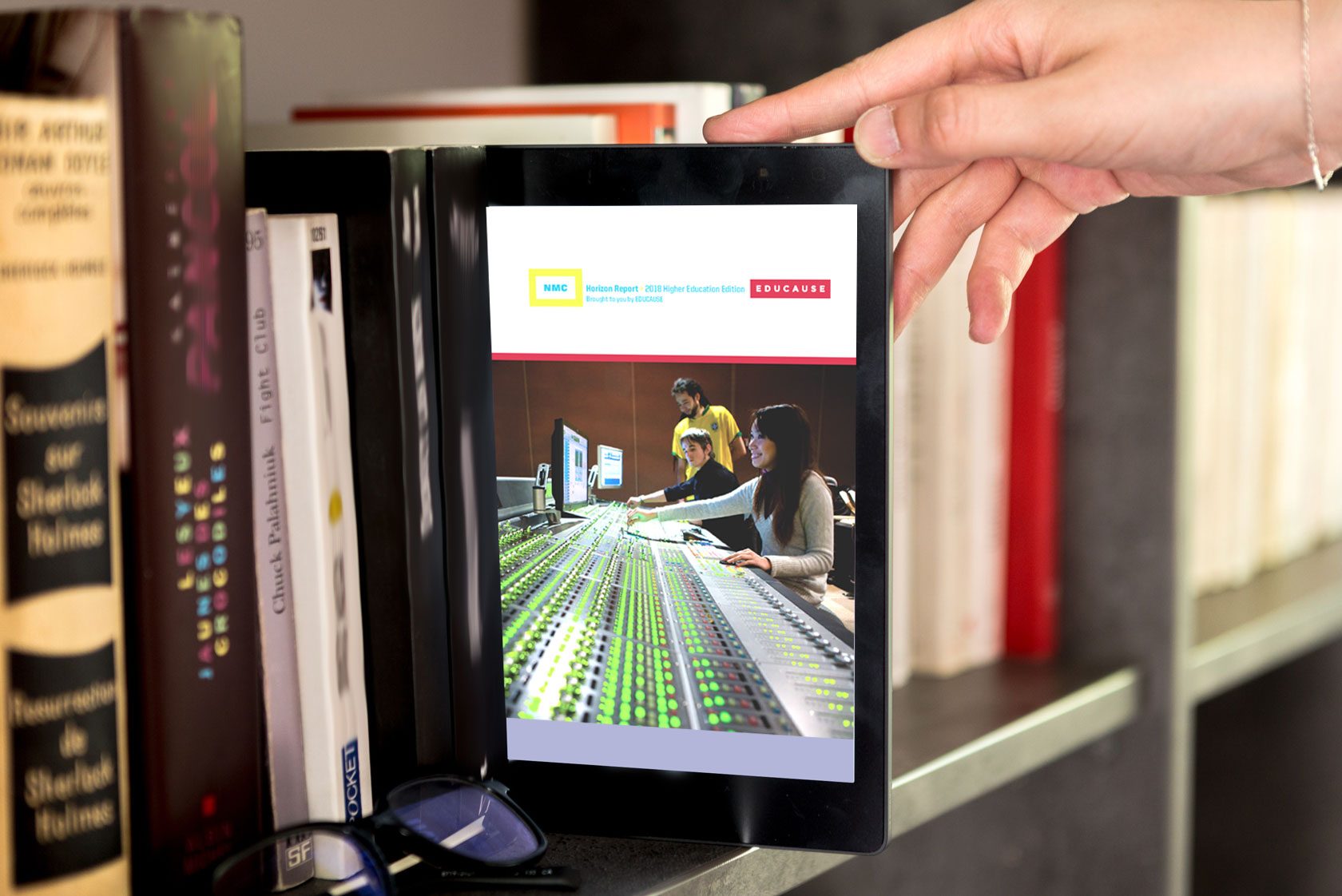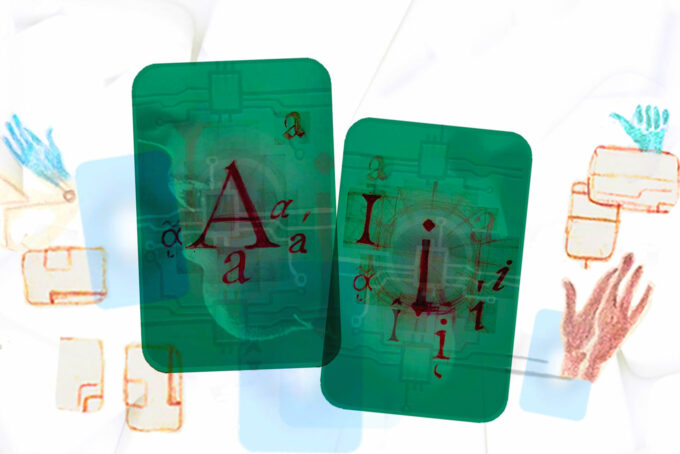
Horizon Report 2018: Adapting Higher Education to the Future of Work
The Horizon Report 2018 Higher Education Edition covers trends, technologies and challenges from “advancing cultures of innovation” to “open educational resources”. Which of these topics are of a special importance for open science and libraries?
The new NMC Horizon Report 2018 Higher Education Edition was published by Educause on 16 August 2018. Thus, the publisher is new but the structure of the report remains the same as within its former editions. The report on higher education is divided into three categories: trends accelerating technology adoption, challenges impeding technology adoption and important technological developments in Higher Education. There are six topics assigned to each of these categories. The categories are being subdivided according to different levels of difficulty or according to short, mid or long-term horizon.
In our blog post we highlight the report’s topics that seem most important for the open science movement and libraries.
Open educational resources on the rise
The “Proliferation of open educational resources” is listed in the report as a mid-term trend for the next three to five years. Embedding OER in institutions’ strategies can support a widespread adoption of OER. The report cites the example of some US-based institutions that have launched degree options with “zero text-book cost”, like the Tidewater Community College. Four years after launching the programme it has served 10,200 students and has saved text-book costs of more than $1 million. In addition, the rate of students dropping out was smaller and the students achieved better grades on average than usual.
More interdisciplinary studies and new spaces for learning and collaboration
Among the mid-term trends is the “rise of new forms of interdisciplinary studies” which does conflict with longtime traditions of academic specialization. Nevertheless, innovative uses of open-source tools, data structures and visualizations help researchers and academic technologists as well as developers to prepare the ground for more interdisciplinary collaboration.
“Redesigning learning spaces” is listed among the short-term trends. For instance, removing spatial barriers between learners and instructors fosters active learning; flexibility and openness foster the development of a community of learners. Factors like these are increasingly used to optimize learning spaces for project-based interactions. In addition, digital collaboration is supported by upgrading bandwidths and installing large displays, and exploring mixed-reality technologies.
Makerspaces fit this trend. In the report they can be found among the important developments in educational technology with a narrow time span. Makerspaces are experiential environments that promote hands-on learning and the development of skills like collaboration, innovation and problem solving, considered important for the future work force. Furthermore, academic makerspaces serve a powerful, highly democratized research purpose. Some higher education institutions like the University of Washington have created guidelines for building makerspaces including recommendations on tools, equipment and space configuration. Other institutions, for instance the University of Calgary, offer maker pedagogy resources, materials selection criteria, and project ideas. Higher education institutions are also reexamining library facilities while viewing them more and more as a space that fosters creativity and collaboration. Thus, installing makerspaces in university libraries is a logical step.
Other institutions, for instance the University of Calgary, offer maker pedagogy resources, materials selection criteria, and project ideas.
5 Dangerous Things You Should Let Your Children Do: Gever Tulley at TEDxMidwest
Higher education institutions are also reexamining library facilities while viewing them more and more as a space that fosters creativity and collaboration. Thus, installing makerspaces in university libraries is a logical step.
Advancing digital equity and digital literacy
A lack of digital equity as a result of slow internet connections and disproportionate access to technologies, based for instance on gender or economic status, is a difficult challenge as it hampers progress in the use of educational technologies. For example, high-speed internet access is crucial for massive open online courses (MOOCs) and OER. Part of this challenge is also the tool implementation and understanding the tool use.
“For learning tools to be effective, educators must have access to adequate and ongoing training and professional development—before instructors can help students navigate tools for consumption and creation, they must be digitally fluent themselves. The time and financial commitments for these opportunities pose roadblocks for many institutions.”
– NMC Horizon Report 2018 Higher Education Edition
Improving digital literacy is a related challenge. Practices and technological skills that are vital for success in the workplace and citizenship today are part of an expanded concept of digital literacy in use by some libraries for a short period of time. The report contains examples of the Virginia Tech University Libraries that have launched a framework for digital literacy as well as of other university libraries’ digital literacy programmes.
Technologies like artificial intelligence (time-to-adoption horizon: two to three years), mixed reality and robotics (time-to-adoption horizon: four to five years, each) have a twofold meaning for higher education institutions: On the one hand they can have a positive impact on student services. On the other hand they are the subject of digital literacy training for academics as well as for students that want to be prepared for the future workplace.
Adapting to the future of work
Paying attention to and change the organizational structure of higher education institutions by “adapting organizational designs to the future of work” is seen as a difficult challenge. The traditional structure and hierarchy of higher education is being challenged because of the internet.
“Technology, shifting information demands, and evolving faculty roles are forcing institutions to rethink the traditional functional hierarchy. Institutions must adopt more flexible, team-based, matrixed structures to remain innovative and responsive to campus and stakeholder needs.”
– NMC Horizon Report 2018 Higher Education Edition
Institutions are looking for other options to integrate far-away and interdisciplinary faculty. Furthermore, there is a new variety of teaching and learning models as well as mediums, and lifelong learning has become an important topic.
On the other side, colleges and universities are rethinking their tenure programmes and are thereby aligning their organizational designs with the future of work. For instance, the University of British Columbia now encourages the creation and use of OER in its revised „Promotion and Tenure Guide“ and offers formal recognition for engaging in OER activities.
Evolving roles of educators
In a changing working world “rethinking the roles of educators” is also required, and this is considered as a wicked challenge. Faculty are increasingly expected to understand and employ a variety of technology-based tools and they are more and more expected to be always accessible for their students via text messages, instant messaging, social media and so on. Furthermore they are expected to make use of a variety of course models, including face-to-face, blended, flipped, and online learning as well as they are expected to act as guides and facilitators that help their students develop valuable professional skills such as critical thinking. This leads to the necessity of rethinking the responsibilities and roles of educators.
Joining forces and advancing innovation cultures
To tackle those challenges listed in the report, the two long-term trends expected to drive EdTech adoption in higher education will be helpful on the one hand while being challenging themselves on the other hand. The first of them is “advancing cultures of innovation”, forcing institutions to assess and change their institutional structure in order remove barriers to innovation and to keep pace with external developments. The second is “cross-institution & cross-sector collaboration”. Institutions which for instance pool their resources within a partnership are thereby able to offer a broader variety of services or to aim for more research output.
View Comments

Practice of Research Data Management: Findings from an IFLA Project on Data Curators
What are the roles, responsibilities and activities of information professionals who...



